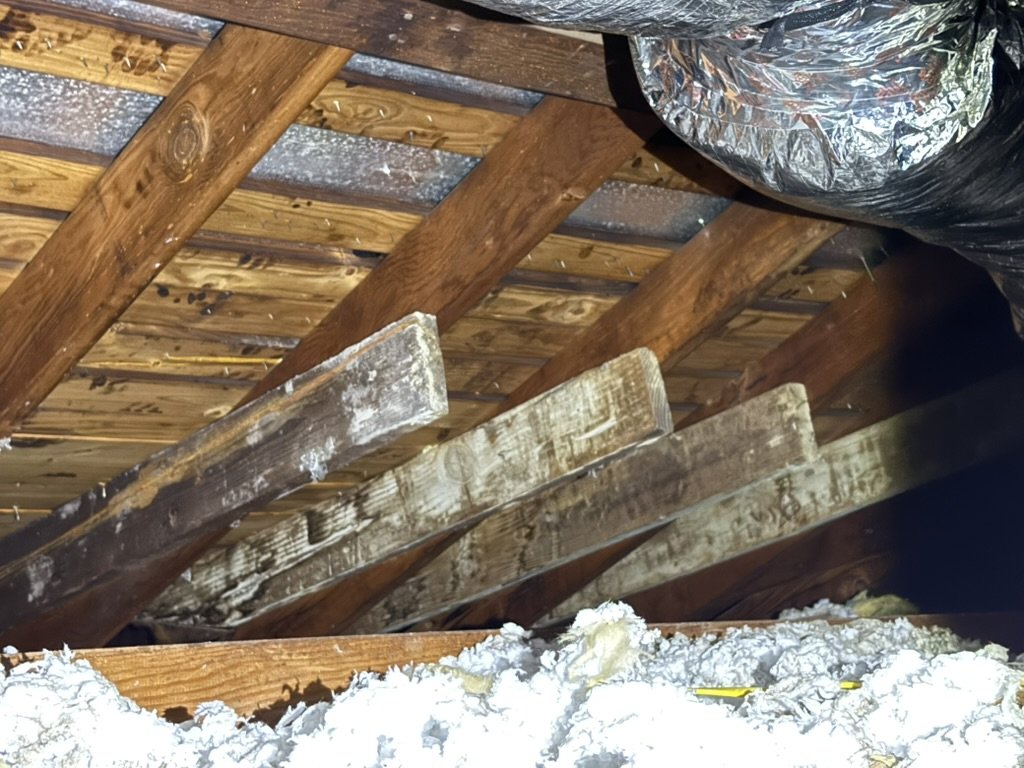Roof Ventilation for Houston Homes: How Proper Airflow Extends Roof Lifespan
Why Roof Ventilation Matters for Houston Homes
Roof ventilation is one of the most crucial yet overlooked components of a healthy roofing system, particularly in Houston’s hot and humid climate. Proper ventilation is more than just a way to cool your attic – it’s essential for maintaining your roof’s structural integrity, energy efficiency, and overall lifespan. When airflow is optimized, it helps prevent common issues like premature shingle deterioration, mold growth, and excessive energy costs.
Houston’s intense summers, coupled with high humidity, create an environment where poor ventilation can cause significant damage to roofing materials. A well-ventilated attic balances the temperature inside your home, protects your roof’s underlayment, and prevents costly repairs down the road.
Related Reading: If you’re experiencing high energy bills or temperature imbalances in your home, read our article on Understanding Roof Overheating to see if ventilation could be the issue.
How Roof Ventilation Works
Roof ventilation is a system of intake and exhaust vents that allow air to circulate throughout the attic space. The goal is to create a continuous flow of cool air from the soffit vents (intake) and allow hot, humid air to escape through ridge vents (exhaust). A balanced ventilation system prevents heat and moisture from becoming trapped in your attic, reducing the risk of damage to your roofing system. It also ensures that your roof deck and shingles aren’t exposed to extreme temperatures, which can cause premature aging.
For homeowners considering a new roof, ventilation should be an essential part of the planning process. Inadequate ventilation can void manufacturer warranties and lead to issues such as “baking” your shingles from underneath.
Did you know? Improper ventilation can contribute to a need for early roof replacement. Check out our Roof Replacement Cost Guide for more insights.
Common Problems Caused by Poor Ventilation
Shingle Deterioration: Excessive heat can cause shingles to become brittle, leading to curling, cracking, or blistering.
Moisture Buildup: Without proper airflow, moisture from the living areas can get trapped in the attic, leading to mold, mildew, and wood rot.
Ice Dams: Even in Houston’s rare cold spells, poor ventilation can cause ice dams, which are formed when warm attic air melts snow on the roof, refreezing at the eaves and causing damage.
High Energy Costs: A hot attic forces your HVAC system to work harder, leading to higher energy bills.
Signs That Your Roof May Need Better Ventilation
Excessively Hot Attic: If your attic feels like a furnace in the summer, it’s a clear indicator of poor airflow.
Rust on Metal Fixtures: Corrosion on nails or fasteners in the attic is a sign of excess humidity.
Peeling Paint: Moisture from the attic can seep into the walls, causing paint to bubble or peel.
Mold or Mildew Smell: Any musty odor in the attic or upstairs rooms could indicate mold caused by poor ventilation.
For more tips on spotting roof issues early, read our guide on Identifying Roof Damage Before It’s Too Late.
The Framework Ventilation System: A Houston-Specific Solution
At Framework Home Remodeling, we’ve tailored our Framework Ventilation System to withstand Houston’s extreme weather. Our system includes a patented 12-inch intake vent cut into the decking, paired with exhaust vents in a 1:1 ratio for optimal airflow. This design significantly reduces attic temperatures, enhances airflow, and prevents damage caused by moisture buildup.
We use only the best materials and installation techniques to ensure that your roof ventilation not only meets but exceeds industry standards. Our approach goes beyond simply installing vents—we assess the entire roof system to ensure proper balance and efficiency.
Read More: Curious about how ventilation fits into a complete roofing solution? Check out our comprehensive guide to roofing systems.
Why Proper Roof Ventilation Matters for Energy Efficiency
Proper ventilation doesn’t just protect your roof – it keeps your home comfortable and your energy costs in check. With adequate airflow, your attic stays cooler, which means your HVAC system won’t have to work overtime to keep your home cool in the summer. This balance can translate into lower utility bills and a more comfortable living space year-round.
Choosing the Right Ventilation System for Your Houston Home
When it comes to choosing a ventilation system, there’s no one-size-fits-all solution. Factors like roof slope, attic size, and local climate play a big role in determining the right configuration. At Framework Home Remodeling, we start by assessing your attic’s existing airflow, then tailor a solution that fits the specific needs of your home.
Pro Tip: Always avoid shortcuts like installing box vents without proper intake or attempting to use attic fans without adequate exhaust vents. These can disrupt the natural airflow and cause more harm than good.
Why Investing in Proper Roof Ventilation is Worth It
Investing in a high-quality ventilation system isn’t just about meeting building codes—it’s about protecting your home’s most valuable asset: your roof. By ensuring proper airflow, you’ll extend the lifespan of your roof, reduce energy costs, and prevent costly damage caused by heat and moisture buildup.
Ready to maximize your roof’s lifespan with proper ventilation? Contact us today for a free, no-obligation estimate.



